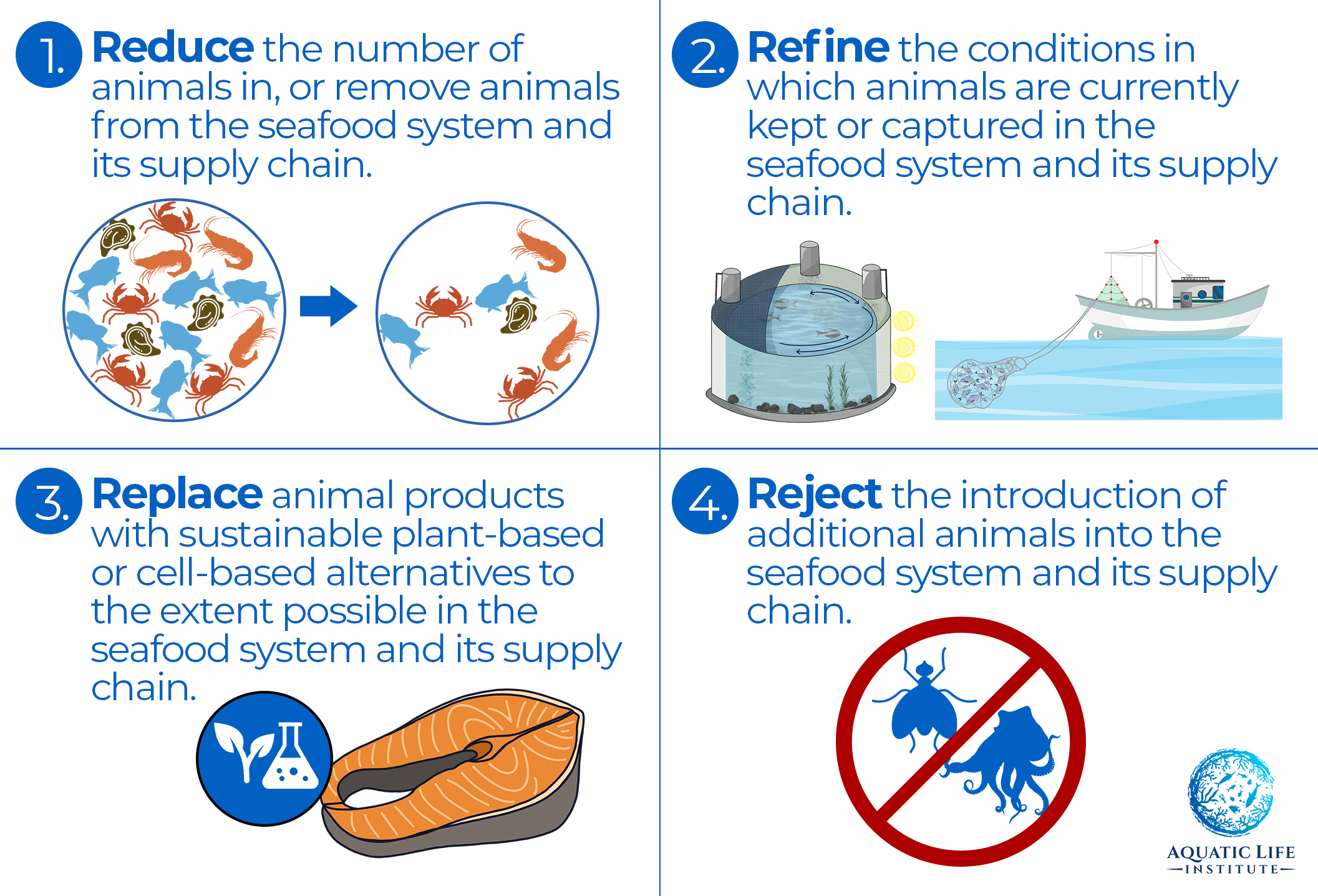‘4R’ Approach to Seafood System Reform
Aquatic Life Institute utilizes 4 fundamental approaches to enact formative change within the global seafood system. Through our primary streams of activity across the supply chain, advocacy pursuits are identified and executed according to one or more of the following principles:
Reduce the number of animals in, or remove animals from, the seafood system and its supply chain.
Refine the conditions in which animals are currently kept or captured in the seafood system and its supply chain.
Replace animal products with sustainable plant-based or cell-based alternatives to the extent possible in the seafood system and its supply chain.
Reject the introduction of additional animals into the seafood system and its supply chain.
These methodologies are based on the well-known “3Rs” guideline for animals in research. The Principles of Humane Experimental Technique was published by William Russell, a zoologist, and Rex Burch, a microbiologist, in 1959 (1). The book introduced the concept of the “3Rs”: replacement, reduction, and refinement of animal treatment in research. This concept is grounded in the sentiment that animals should only be used if a scientist’s best efforts to find a non-animal alternative have failed. And if animal experimentation is vital, only the most humane practices should be applied to the smallest number of animals required for deriving valid information (2).
Similarly, Aquatic Life Institute asserts that we shall support efforts to alleviate the magnitude of suffering through reduction initiatives resulting in fewer aquatic animals being commercialized.
We shall collaborate with stakeholders to initiate modifications and procedures that minimize pain and distress while positively enhancing the lives and welfare of aquatic animals throughout the entirety of their existence.
We shall prescribe reasonable, sustainable, and ethical replacements for aquatic animal products in an area where aquatic animal products have historically been used, including both absolute replacements (replacing aquatic animal products with plant-based products) and relative replacements (replacing a partial amount of aquatic animal products being used to the extent realistically possible, or replacing animals reliant on aquatic animal products, with those that are not).
We shall reject developments that instigate either an increase in the number of animals already being used or inflict a surplus of suffering on additional animal species for which industrial activity is inconceivable.
References
(1) Russell, W.M.S. and Burch, R. L. (1959). Charles C. Thomas Publishing, Springfield.
(2) Fenwick N, Griffin G, Gauthier C. The welfare of animals used in science: how the "Three Rs" ethic guides improvements. Can Vet J. 2009 May;50(5):523-30. PMID: 19436640; PMCID: PMC2671878.


